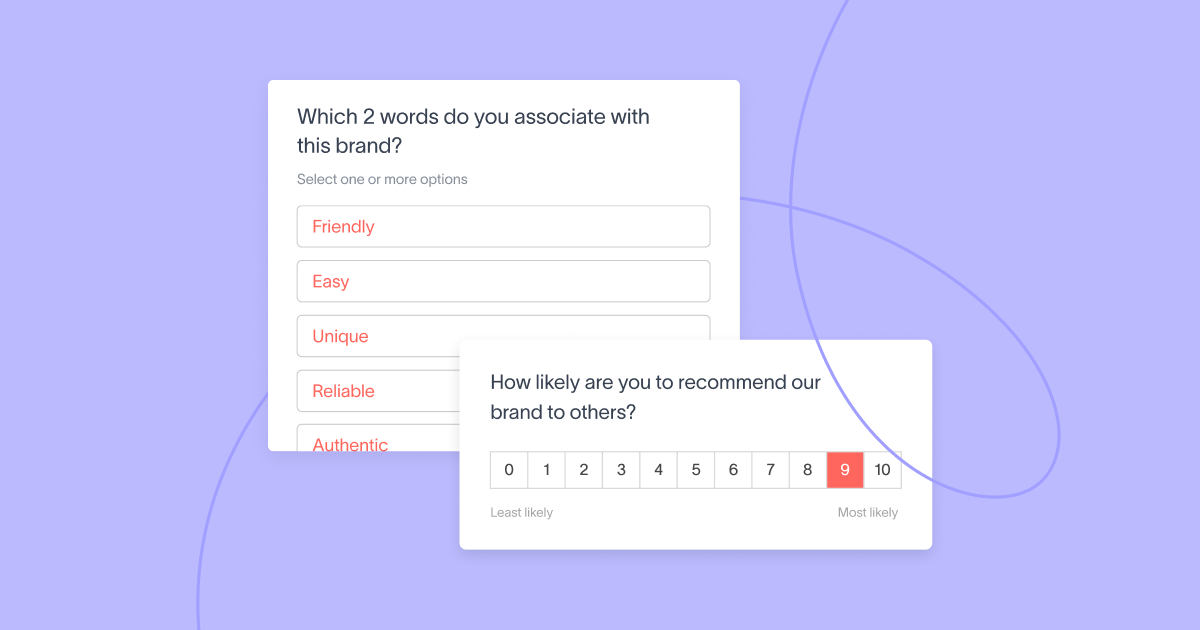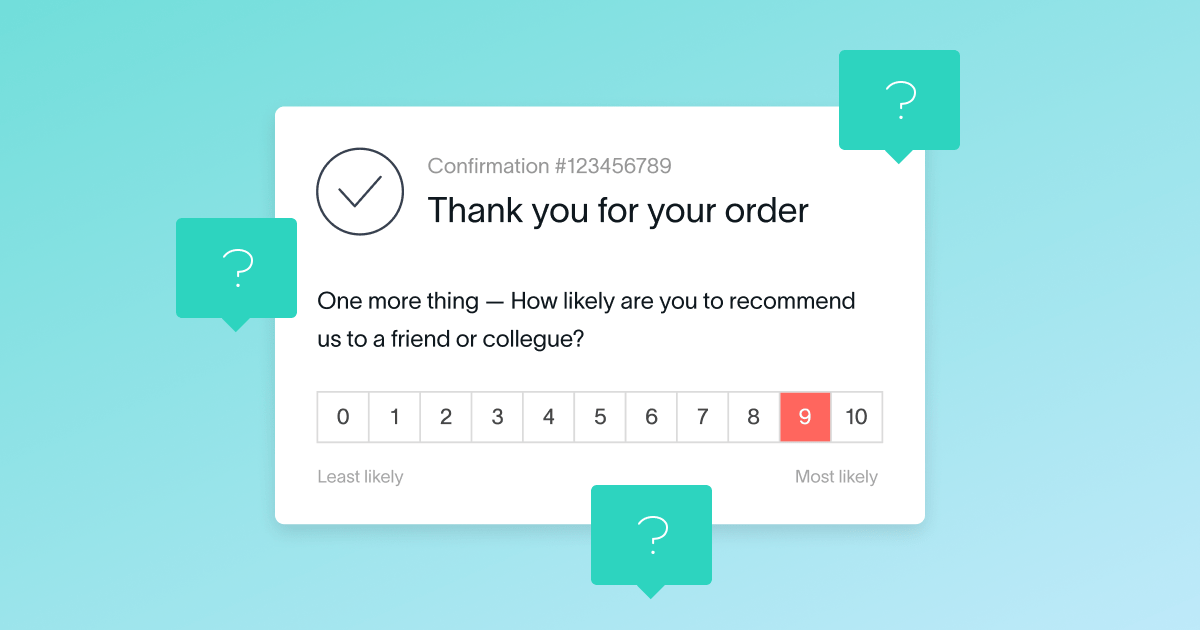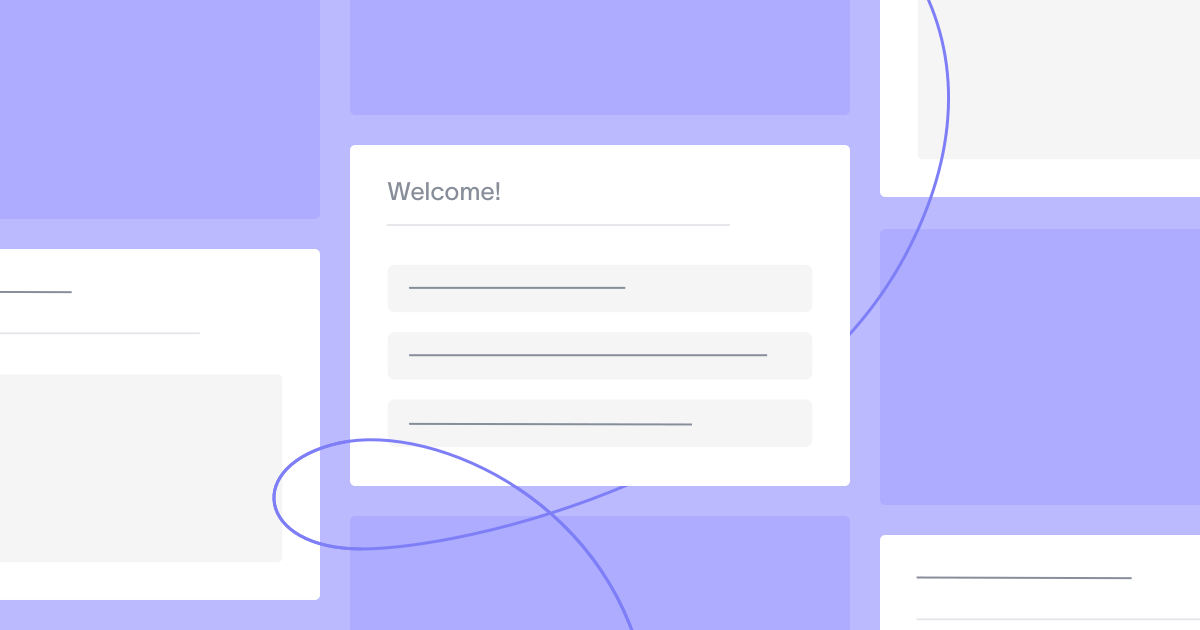Do you have a clear understanding of your customer? Are you familiar with their age, location, and employment status? Although these questions may come across as personal, having this information is crucial for effectively understanding and targeting your desired audience. One way to collect this data is by utilizing demographic survey questions.
In this post, we’ll cover everything you need to know about demographic survey questions, including 12 examples to use in your next survey.
Jump to:
- What is a demographic?
- What are demographic survey questions?
- Why are demographic survey questions important?
- 12 common demographic survey questions and examples
- Best practices for using demographic survey questions
What is a demographic?
A demographic is a characteristic of a person or population. These characteristics are useful in categorizing a large customer base into smaller groups. By understanding the traits and qualities of your customer base, you can make informed decisions regarding marketing, customer service, sales, and customer experience strategies.
What are demographic survey questions?
Demographic survey questions ask survey respondents for background information to help survey creators better understand their audience. Demographic questions often ask about respondents’ age, gender, race, ethnicity, income, employment status, level of education, marital status, and more.
By asking demographic questions in surveys, companies can collect demographic information at scale, and in turn, design a market segmentation strategy that allows them to target and reach the right customers.
Why are demographic survey questions important?
Almost every survey includes demographic questions, but what makes them so important? Below, we’ve detailed a few reasons to collect demographic information from your survey respondents.
More accurate buyer personas
A buyer persona is a fictional snapshot of a specific type of customer, their traits, and their goals. You need demographic data – like your customer’s age range or job function – to create accurate buyer personas.
The more accurate your buyer personas are, the better you will understand your customers’ needs, expectations, and buying habits. This understanding then allows you to create customized customer journey maps for each persona so you can then strategize and improve the customer experience at critical brand touchpoints.
Deeper insight into recurring trends
Demographic data allows you to sort survey results into categories of your choosing – and identify trends within those categories.
For example, if a product has a sudden uptick in sales, you can use demographic information to understand who’s contributing to this new trend – and use that intel to market to your other segments.
Better understanding of your target audience
By conducting market research and asking demographic survey questions, you gain a deeper understanding of who your customers are now – and who you might want to target in the future.
For example, if you’re launching a new product or service, you want to be strategic about who you’re targeting. Armed with the knowledge of who your current customers are, you can segment your launch to target those with a specific interest or need in what your new product or service offers.
Or, demographic survey insights might reveal a new market opportunity altogether. For instance, if a customer survey reveals that your audience trends towards a predominantly Gen X population but your new product targets Gen Z, you’ll want to consider altering your product positioning and marketing strategies to reach Gen Zers.
Validation of the number of survey responses
Demographic data helps you ensure that your survey results are fair and representative. Answers to demographic questions will reveal any skewed demographic information, such as an outsized representation of one gender, age group, ethnicity, and so on.
Especially in foundational or initial surveys, you want to aim for a diverse respondent pool. Then, you can segment your audience to target specific groups.
12 common demographic survey questions with examples
Now that we’ve covered what demographic survey questions are and why they’re important, let’s take a closer look at some common question types and examples of how to ask them.
1. Gender
Gender is one of the most common demographic survey questions. Asking about gender can be as simple as “What is your gender identity?” followed by multiple choice answers. Another option is to ask respondents in an open-ended question format with a free-response box.
Example: “What is your gender identity?”
A. Female
B. Male
C. Transgender
D. Nonbinary
E. Other (please specify)
F. Prefer not to say
2. Age
Age is another common demographic survey question as it helps survey creators identify not only the ages of their customers, but also their generations. Generational data can be of particular interest to your marketing team and strategy, especially regarding how and where to reach the target generation.
TIP: When asking about age, it helps to provide age ranges in your answer options. This makes it easier to analyze survey data based on age groups as opposed to every distinct age. It also allows customers who aren’t comfortable sharing their exact age with you to answer instead of skipping the question.
Example: “How old are you?”
A. Under 18
B. 18-24 years old
C. 25-34 years old
D. 35-44 years old
E. 45-54 years old
F. 55-64 years old
G. 65+ years old
3. Ethnicity
Today, many countries are made up of people with myriad ethnic backgrounds, so it can be useful to survey creators to have a better understanding of this demographic type.
When asking about ethnicity in a survey, there are a couple of best practices to follow: (1) give respondents the opportunity to select more than one ethnicity as many people identify this way, and (2) always provide the option to not answer the question.
Example: “What is your ethnic background?”
A. White/Caucasian
B. Asian
C. Native Hawaiian or Pacific Islander
D. Hispanic or Latino
E. African-American
F. Native American
G. Two or more
H. Other (please specify)
I. Unknown
J. Prefer not to say
4. Location
Depending on your business, it may be necessary to understand where your customers are physically located. For global businesses, you may want to know the country, territory, and/or state of residence. For local businesses, you may want the city, town, or zip code.
To make it easy to collect (and later analyze) this demographic information, you can use a drop-down list format, e.g., a list of the 50 U.S. states.
Example: “Where do you live?”
A. United States
B. Mexico
C. Canada
D. Brazil
E. Spain
F. France
G. Other (please specify)
H. Prefer not to say
5. Education
Gathering information about customers’ highest level of education can be useful when segmenting your survey data, building a strong buyer persona profile, or avoiding any potential biases in your survey pool.
Example: “What is your level of education?”
A. Less than High School
B. High school (including GED)
C. Some college (no degree)
D. Technical certification
E. Associate degree (2-year)
F. Bachelor’s degree (4-year)
G. Master’s degree
H. Doctoral degree
I. Professional degree (JD, MD)
J. Prefer not to say
6. Marital status
Marital status can help you better understand the needs and expectations of your audience – especially if your product or service targets one demographic over another.
Example: “What is your marital status?”
A. Married
B. Widowed
C. Divorced
D. Separated
E. Single
F. Prefer not to say
7. Employment
This demographic question allows survey creators to gauge the segment of the population their products and services appeal to and are purchased by.
Example: “What is your employment status?”
A. Full-time
B. Part-time
C. Contract or temporary
D. Retired
E. Unemployed
F. Unable to work
G. Other (please specify)
H. Prefer not to say
8. Annual household income
Asking about annual household income can help you better understand your target audience’s buying power.
Example: “What is your annual household income?”
A. $0-$29,999
B. $30,000-$59,999
C. $60,000-$89,999
D. $90,000-$119,999
E. $120,000+
F. Prefer not to say
9. Political preferences
While a sometimes polarizing topic, knowing your customers’ political preferences can reveal what’s important to them, which can be particularly useful when launching and marketing new products and services.
Example: “Which of the following groups do your political views align with?”
A. Democrat
B. Republican
C. Independent
D. Other (please specify)
E. Don’t know
F. Prefer not to say
10. Family and dependents
While asking about marital status helps you understand your customers on one level, asking about family and dependents reveals even deeper insights about their behaviors and needs.
Example: “How many dependents live in your home?”
A. None
B. 1
C. 2
D. 3
E. 4+
F. Prefer not to say
11. Language
A person’s primary language might lend to cultural upbringing, as well as traditional customs and norms. Understanding the language(s) your audience speaks can also help you market to them better – and possibly in new ways.
Example: “What is the primary language spoken in your home?”
A. English
B. Spanish
C. French
D. Italian
E. Portuguese
F. Mandarin
G. Arabic
H. Urdu
I. Other (please specify)
J. Prefer not to say
12. Religion
Religion is a cultural influence that helps you understand your customers’ values and beliefs. Some respondents may not be religious, so it’s a good idea to include an option for that.
Example: “Do you identify with any of the following religious groups?”
A. Catholicism/Christianity
B. Judaism
C. Islam
D. Buddhism
E. Hinduism
F. None
G. Other (please specify)
H. Prefer not to say
Best practices for using demographic survey questions
Keep these 5 best practices in mind as you design your survey and demographic questions.
1. Establish the goal of your survey
Knowing the goal of your survey helps you get crystal clear on what demographic information is necessary for your research and why.
TIP: As you’re designing your survey, consider explaining the survey’s purpose in an introduction message. Whether you’re conducting market research for a new service or you want to better align your product with your customers’ needs, add clarity upfront so your survey respondent can feel more comfortable completing your survey.
2. Decide which demographic survey questions to include
Not every survey needs to include every type of demographic question. That said, you do want to ask the right questions to glean the insights you need for analysis and to ensure fair representation.
Our advice? Think about your end goal, and work backward to include the questions that will help you achieve that goal.
3. Choose which demographic questions are mandatory
You may deem some demographic questions necessary for understanding your audience, validating the responses, and ensuring a fair representation of your customer base. In that case, you can choose to make some questions mandatory, meaning a respondent cannot move on until they’ve provided an answer.
However, you want to be as inclusive as possible; some respondents may feel a question is too personal to answer or that the list of answer options doesn’t include an answer that applies to them.
The solution? Provide options for respondents to opt out of answering (more on this below) or provide the option to select “other” with an open-field text box where respondents can type in their responses.
4. Allow respondents to opt out of answering
As you saw in many of the example survey questions above, allowing respondents to opt out of answering questions – especially deeply personal or potentially irrelevant questions – is a survey design best practice.
You want your surveys to be a safe place for respondents to share their thoughts and feelings. Giving respondents the option to select “prefer not to answer” is one way to help them feel comfortable to participate in the questions they do want to answer – and move on from the ones they don’t.
5. Determine where to include your demographic questions
Knowing where to ask demographic questions is just as important as what you ask.
Demographic survey questions should be placed at the end of your survey so that respondents aren’t met with personal questions right away. Keep your respondent’s focus on the questions that matter most to your goal, first, and save the additional demographic questions for the end. That way, the customers who aren’t as willing to share sensitive information are still able to provide their initial insights before dropping off.
TIP: Consider making your survey anonymous. If you let your survey respondent know ahead of time that their first and last name won’t be tied to their responses, they might be more inclined to share personal information.
With demographic survey data, you can understand your audience, segment data by category, and target new and existing customers with data-backed strategies. Ready to use demographic questions in your surveys? Start sending free surveys with Delighted today.







